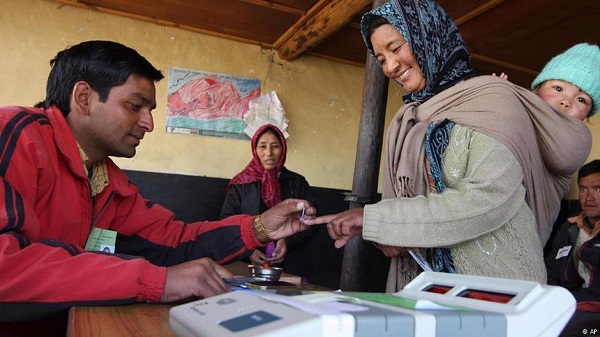Indian Elections Roundup: November 2018
December 4, 2018 | Expert Insights

Before India goes to the poll in the General Elections in 2019, several key states have held elections in 2018 which have yielded important developments.
In late November 2018, Madhya Pradesh, Chhattisgarh, and Mizoram hosted their legislative assembly elections.
Background
India is a federal parliamentary democratic republic in which the President of India is the head of state and the Prime Minister of India is the head of government. India follows the dual polity system, i.e. a double government that consists of the central authority at the centre and states at the periphery.
Governments are formed through elections held every five years (unless otherwise specified), by parties that secure a majority of members in their respective lower houses (Lok Sabha in the central government and Vidhan Sabha in states).
India’s federal form of government requires that each state also has its own government. The executive of each state is the Governor (equivalent to the president of India), whose role is ceremonial. The real power resides with the Chief Minister (equivalent to the Prime Minister) and the state council of ministers. States may either have a unicameral or bicameral legislature, varying from state to state. The Chief Minister and other state ministers are also members of the legislature.
Analysis
Madhya Pradesh: Elections to the Madhya Pradesh Legislative Assembly were held on 28 November 2018 to elect members of the 230 constituencies in Madhya Pradesh. Political analysts predict that the election will be a direct political battle between the Bharatiya Janta Party (BJP) and the Indian National Congress (INC). While the Shivraj Singh Chouhan government will try to win for a consecutive 4th term, the INC will fight for winning the state after 2003. It is also a major battle between senior Congress leader Arun Yadav and the incumbent Chief Minister Shivraj Singh Chauhan as they face off each other in Budhni.
Opinion polls and predictions keep the BJP in power with 122 seats with the INC forming the opposition with 95 seats. This will be a net loss of 44 seats for the BJP while the INC stands to gain between 27-29 seats. Results are to be declared on December 11, 2018.
Chhattisgarh: The 2018 Chhattisgarh Legislative Assembly election was held to elect members to the Legislative Assembly of the Indian State of Chhattisgarh. The election was held in two phases for a total of 90 seats; the first for 18 seats in South Chhattisgarh was held on 12 November, and the second for the remaining 72 were held on 20 November.
Opinion polls show the BJP will return their mandate with a net gain of 7 seats, while the INC will turn out a poor show with a net loss of 14 seats. Results are to be declared on December 11, 2018.
Mizoram: The legislative assembly election was held on 28 November 2018 to elect members of the 40 constituencies in Mizoram. The state has been a traditional INC bastion with very little opposition. The INC has an absolute majority in the house with 29 seats and opinion polls predict INC will retain power with a marginal shift in voter share and seats. The BJP has not won a single seat in Mizoram in the 2013 elections and is not predicted to breach the 5-seat mark in the 2018 elections as well.
Mizoram is just one of the two states in which the INC has a majority government as of November 2018. A win in this election will strengthen their prospects with North Eastern voters before the 2019 General Elections, a region which has been historically an INC stronghold.
Assessment
Our assessment is that these three elections will reinforce the electoral standings of both major national parties before the 2019 General Elections. We believe that unless there is a shock defeat of either party, the 2019 General Election will remain on track to produce a seat count as per popular opinion polls.








Comments